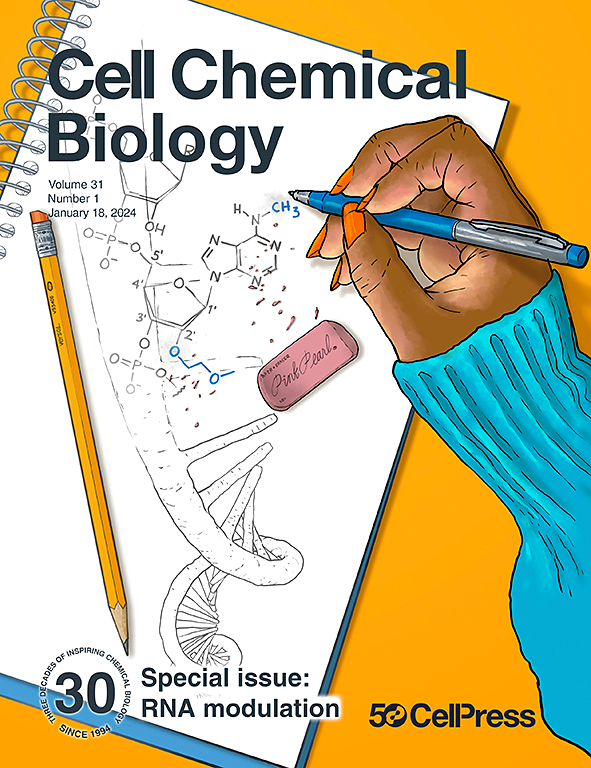靶向蛋白降解的位点分辨评估
IF 7.2
1区 生物学
Q1 BIOCHEMISTRY & MOLECULAR BIOLOGY
引用次数: 0
摘要
以靶向蛋白降解(TPD)为例,利用小分子诱导接近是一种非常有前途的治疗策略,具有巨大的未开发潜力。然而,评估准确反映药物结合的诱导接近事件通常需要具有挑战性和昂贵的特定配体开发,这限制了基于这种模式的药物的进步。为了克服这一瓶颈,我们将遗传密码扩展与超快速生物正交化学相结合,以单残基分辨率使特定蛋白质位点对通用生物正交邻近诱导剂(BPI)分子敏感。表达泛素E3连接酶VHL和CRBN的致敏突变体的哺乳动物细胞在配备靶向溴域和外端(BET)蛋白配体的BPI存在下表现出新底物降解。此外,我们通过募集上游E2偶联酶证明了E2非依赖性降解。我们预期这种方法将具有广泛的适用性,能够全面评估诱发接近的范围。本文章由计算机程序翻译,如有差异,请以英文原文为准。


Site-resolved assessment of targeted protein degradation
Induced proximity using small molecules, exemplified by targeted protein degradation (TPD), represents a highly promising therapeutic strategy with significant untapped potential. However, evaluating an induced proximity event that accurately reflects drug binding typically requires the challenging and costly development of specific ligands, which limits the advancement of medicines based on this modality. To overcome this bottleneck, we combine genetic code expansion with ultra-fast bioorthogonal chemistry to sensitize specific protein sites at single-residue resolution to a generic bioorthogonal proximity inducer (BPI) molecule. Mammalian cells expressing sensitized mutants of the ubiquitin E3 ligases VHL and CRBN exhibit neosubstrate degradation in the presence of a BPI equipped with a ligand targeting bromodomain and extraterminal (BET) proteins. Furthermore, we demonstrate E3-independent degradation through recruitment of an upstream E2 conjugating enzyme. We anticipate that this approach will have broad applicability, enabling comprehensive assessment of the scope of induced proximity.
求助全文
通过发布文献求助,成功后即可免费获取论文全文。
去求助
来源期刊

Cell Chemical Biology
Biochemistry, Genetics and Molecular Biology-Molecular Medicine
CiteScore
14.70
自引率
2.30%
发文量
143
期刊介绍:
Cell Chemical Biology, a Cell Press journal established in 1994 as Chemistry & Biology, focuses on publishing crucial advances in chemical biology research with broad appeal to our diverse community, spanning basic scientists to clinicians. Pioneering investigations at the chemistry-biology interface, the journal fosters collaboration between these disciplines. We encourage submissions providing significant conceptual advancements of broad interest across chemical, biological, clinical, and related fields. Particularly sought are articles utilizing chemical tools to perturb, visualize, and measure biological systems, offering unique insights into molecular mechanisms, disease biology, and therapeutics.
 求助内容:
求助内容: 应助结果提醒方式:
应助结果提醒方式:


